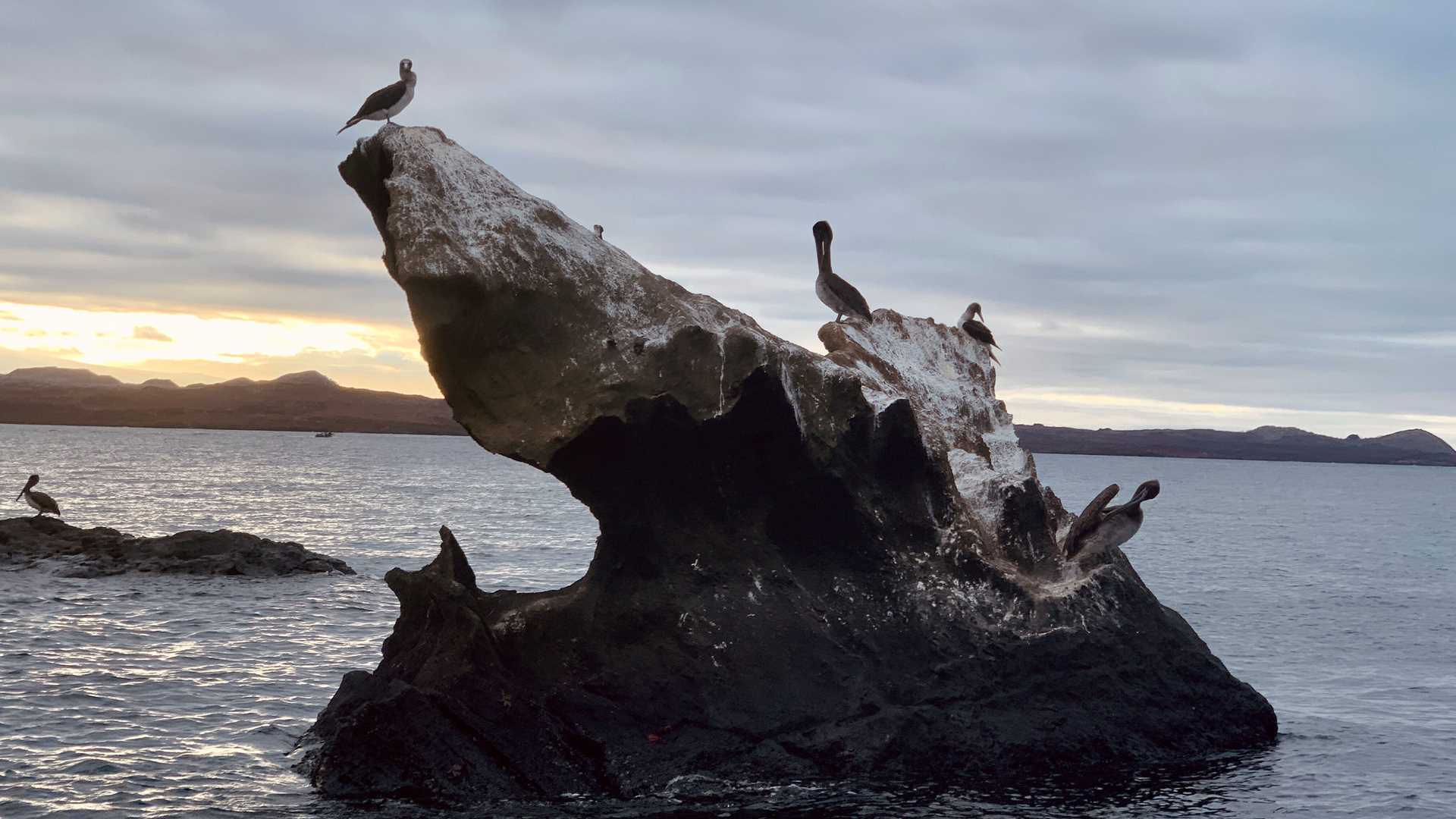Sombrero Chino features a landscape dominated by volcanic formations, including lava tubes, cones, and spatter. The islet's volcanic origin is evident in its rugged terrain with black and red volcanic rocks scattered across the sandy shores. The coastal waters are rich in marine life, including species like sea lions, marine iguanas, and Galápagos penguins. These animals thrive in the nutrient-rich currents surrounding the islet.
Sullivan Bay offers a striking volcanic landscape shaped by recent geological activity. Vast fields of pahoehoe lava flows stretch across the terrain, creating surreal patterns and textures. The surrounding seas are teeming with marine life, including rays, sea turtles, and occasional reef sharks, making it a popular spot for snorkeling and diving.







